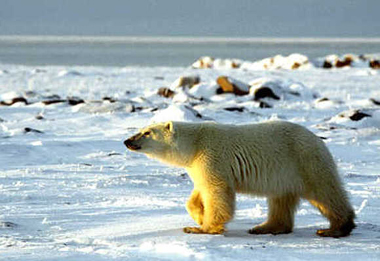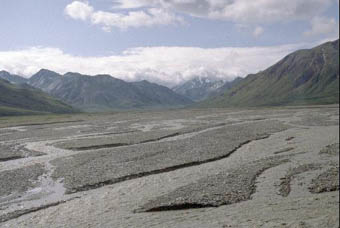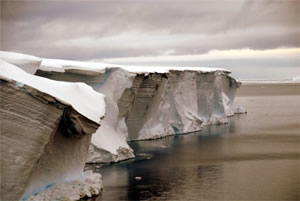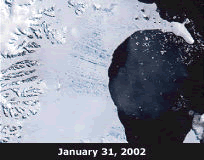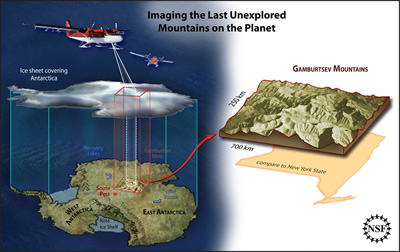Click on image for full size
Nicole Gordon/UCAR
Glaciers and Ice Sheets
For a glacier to develop, the amount of snow that falls must be more than the amount of snow that melts each year. This means that glaciers are only found in places where a large amount of snow falls each year and where it is so cold year-round that at least some of the snow does not melt. Cold climates where glaciers are found exist both in Earth’s polar regions and in high altitude locations at all latitudes.
- Continental glaciers, also called ice sheets, cover large amounts of land in the Earth’s polar regions. The largest ice sheets are located in Antarctica. In the Arctic region, an ice sheet covers Greenland and there is an ice sheet in Iceland. During the most recent Ice Age (approximately 15,000 years ago) a large continental glacier covered much of the northern part of North America. It is long gone, but has left behind a record of where it traveled in the rocks, sediments, and the shape of the land.
- Alpine glaciers are found in high mountain valleys worldwide. Alpine glaciers are responsible for carving mountains into distinctive shapes leaving pointed ridges between glaciers, u-shaped valleys where the glacier moved through, and hills of rock debris called moraines that were pushed by the glacier. Today, because of rapid global warming, alpine glaciers that are at tropical and mid-latitudes are melting very quickly.
Snow that falls on a glacier may eventually become part of the glacial ice. The snowflakes become buried under more and more snow, eventually changing their shape because of the pressure from the layers of snow above and becoming part of the massive ice. Over time the ice crystals become so closely packed that the tiny pockets of air between them are squeezed out and the ice changes in color from white to blue.
Glaciers are not just giant ice cubes. All that ice can be a powerful force. Glaciers move over time scraping rock from the Earth’s surface, bulldozing boulders, gravel, and sand into hills called moraines, and sending ice out over the ocean in massive ice shelves.
How does a glacier move? Under the pressure of its own weight, glacial ice flows downhill over time. If you were to touch a glacier’s ice, it would feel solid and cold, just like ice usually feels, but over a long time it flows like honey. Glaciers also move downhill by sliding at their base, a process called basal slip. The pressure on the ice that is at the bottom of a glacier causes some of that ice to melt producing a slippery little layer for the rest of the ice to slide upon.
Cool Glacier Facts
- Glaciers cover 15 million square kilometers of the Earth’s land surface.
- About three-quarters of Earth’s freshwater is in glaciers.
- The world’s largest glacier today is the ice sheet that covers East Antarctica, which in places is over 4200 meters thick.
- The world’s longest glacier today, the Bering Glacier in Alaska (US), is 204 kilometers long.
Glaciers and Global Warming
- By 2030 there will likely be no more glaciers in Glacier National Park (Montana, U.S.).
- The once white-capped summit of Africa’s highest mountain, Mt. Kilimanjaro, will soon be entirely without glaciers. It has had glaciers on it for almost 12,000 years, however, in the past century the ice has diminished by 80% and scientists report that the glaciers will have entirely melted by 2015-2020.
- If all glaciers and ice sheets melted, sea level would rise approximately 70 meters.
- According to the British Antarctic Survey, the amount of snowfall is outpacing melting on the continent of Antarctica, so the massive ice sheets are not yet shrinking.








